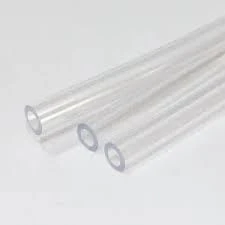Nov . 04, 2024 22:16 Back to list
hdpe drip pipe
The Benefits and Applications of HDPE Drip Pipe in Agriculture
In the world of modern agriculture, efficient irrigation plays a pivotal role in maximizing crop yield and conserving water resources. One of the most effective irrigation methods that has gained significant traction in recent years is drip irrigation, particularly using High-Density Polyethylene (HDPE) drip pipes. This innovative material offers numerous advantages that enhance agricultural practices, making it an ideal choice for farmers seeking sustainable and effective irrigation solutions.
Understanding HDPE Drip Pipes
HDPE, or High-Density Polyethylene, is a thermoplastic polymer known for its strength, durability, and resistance to environmental stressors. These properties make HDPE an excellent material for agricultural applications, specifically in drip irrigation systems. Drip pipes made from HDPE are designed to deliver water directly to the root zone of plants in a precise manner, reducing water wastage and ensuring that crops receive the moisture they need to thrive.
Advantages of HDPE Drip Pipes
1. Water Conservation One of the primary benefits of using HDPE drip pipes is their ability to conserve water. Traditional irrigation methods often lead to significant water runoff and evaporation, but drip irrigation minimizes these losses. By delivering water directly to the plant roots, HDPE drip systems ensure that moisture is used more efficiently.
2. Improved Crop Yield HDPE drip pipes help in maintaining optimum soil moisture levels, which is crucial for plant growth. With better water management, crops can flourish, resulting in higher yields. Farmers who have adopted drip irrigation systems often report healthier plants and improved harvests.
3. Versatile Application HDPE drip pipes can be utilized in a wide variety of agricultural settings, from small-scale nurseries to large-scale farms. They are compatible with numerous crops, including fruits, vegetables, and ornamental plants, making them a versatile option for diverse agricultural practices.
hdpe drip pipe

4. Durability and Longevity HDPE is known for its resistance to UV radiation, chemicals, and physical wear and tear. This durability ensures that HDPE drip pipes have a long lifespan, reducing the need for replacements and maintenance. As a result, farmers can enjoy a reliable irrigation solution that stands the test of time.
5. Cost-Effective Solution Although the initial investment in drip irrigation systems might be higher than traditional methods, the long-term savings on water and fertilizer costs can make HDPE drip pipes a cost-effective choice. Additionally, the increase in crop yields contributes to better financial returns for farmers.
6. Environmental Benefits By promoting efficient water use and reducing runoff, HDPE drip irrigation systems contribute to environmental sustainability. They help in maintaining local water tables and reduce the risk of soil erosion, making them a responsible choice for eco-conscious farmers.
Installation and Maintenance
Installing HDPE drip irrigation systems requires careful planning and design to maximize efficiency. Farmers must consider factors such as soil type, crop types, and local climate conditions when designing their drip irrigation layout. Fortunately, many companies provide consultation and installation services to assist farmers in setting up these systems.
Maintaining HDPE drip pipes is relatively straightforward. Regular checks for clogs, leaks, and wear can help ensure that the system continues to function effectively. Proper maintenance practices can significantly prolong the life of the irrigation system and maintain its efficiency.
Conclusion
HDPE drip pipes represent a revolutionary advancement in irrigation technology, offering farmers a sustainable, efficient, and versatile solution for water management. By utilizing these systems, farmers can not only improve their crop yields but also contribute positively to environmental conservation. As the demand for efficient agricultural practices continues to rise, the adoption of HDPE drip irrigation systems will likely play a significant role in shaping the future of farming. Embracing this technology can lead to a more sustainable and productive agricultural landscape, ensuring food security for generations to come.
-
High-Quality PPR Pipes and Fittings Durable ERA PPR & PVC PPR Solutions
NewsJul.08,2025
-
Black HDPE Cutting Board - Durable, Non-Porous & Food Safe HDPE Plastic Cutting Board
NewsJul.08,2025
-
High-Quality CPVC Panel Durable HDPE & PVC Panels Supplier
NewsJul.08,2025
-
Double PE Welding Rod Supplier - High Strength, Durable & Versatile Welding Solutions
NewsJul.07,2025
-
High-Quality PVC-O Pipe Supplier Durable 75mm PVC Pipe & Connections Leading PVC Pipe Company
NewsJul.07,2025
-
HDPE Drainage Pipe Supplier – Durable & Corrosion-Resistant Solutions
NewsJul.06,2025

